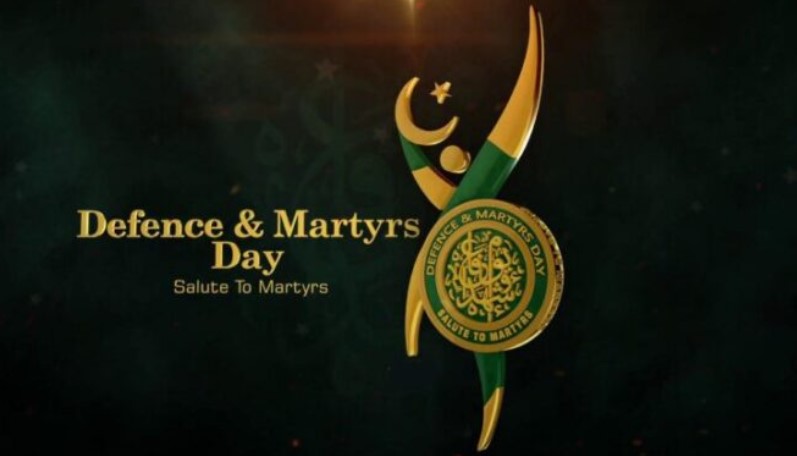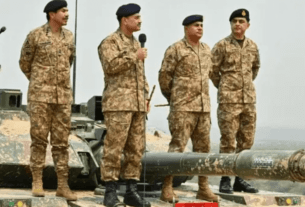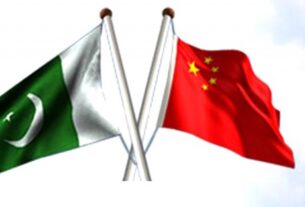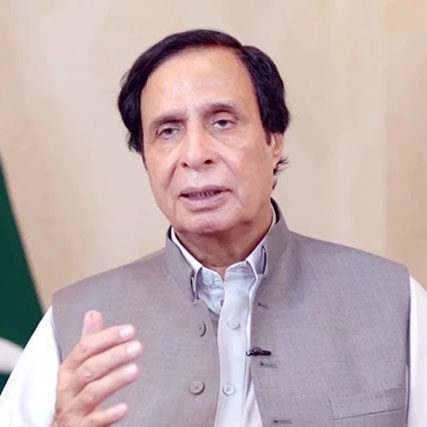1.September 6
Pakistan’s Defense Day, which is celebrated every year on September 6, is an important event in the country’s history. On this day in 1965, the Pakistani army managed to stop a surprise attack by the Indian army.
2. Historical significance of National Defence
Day Defence Day celebrates Pakistan’s extraordinary resilience and unity in the face of adversity. On September 6, 1965, Pakistan was struck by a surprise attack by the Indian Army. The attack, carried out in the dark, was aimed at capturing Pakistan’s key facilities. However, these attempts were thwarted by the actions of the Pakistani army and the lack of public support across the country.
3. The Indo-Pak War of 1965
The crisis started when India launched Operation Gibraltar to send troops into Jammu and Kashmir to create a rebellion. Pakistan responded with Operation Grand Slam to capture the capital of Akhnoor. The war was fiercely fought, including the famous battle of Chawinda, where the Pakistani army launched a massive attack.
4. Important events :
1. First battles:
The conflict started with fighting along the Line of Control (LoC) in Kashmir.
2. Battle of Chawinda:
One of the biggest tank battles in history, where the Pakistani army resisted the Indian advance.
3. Cease fire:
The war ended with a cease-fire agreement by the United Nations which led to the Tashkent Agreement in January 1966.
4. Celebrating National Defense Day
Defense Day is celebrated with various festivals and events across Pakistan. The day begins with a flag laying ceremony at the Tomb of the Unknown Soldier, followed by a parade, military parade and speeches by national leaders. The President and Prime Minister of Pakistan address the nation, emphasizing the importance of the day and paying tribute to the martyrs.
1.Demonstrations and demonstrations of soldiers
The day is marked by a grand military parade showcasing the latest advances in Pakistan’s defense technology. This parade includes tanks, planes and other military equipment. The event showcases the capabilities and readiness of the Pakistan Army.
2. . Thank the witnesses
We salute the soldiers and civilians who gave their lives for our country. Ceremonies are held across the country to honor his courage and bravery. The families of the martyrs are often invited to these events to express the gratitude and respect of the nation.
5. military operations:
Since the 6 september 1965 war, Pakistan has faced many challenges, including insurgency and terrorism. The military has taken several important steps to deal with these threats. This section provides an overview of these activities, their objectives and results.
1.Operation Mizan
History:
Launched in 2002, Operation Mizan was one of Pakistan’s first major offensives. The operation targeted armed groups in the Federally Administered Tribal Areas (FATA), particularly in South Waziristan.
Objective:
The main objective of the army: The main objective is to eliminate the armed forces operating in FATA.
Restoring Stability:
The aim is to increase stability in the region and prevent further military intervention. Competition: Initial decline:
The operation was plagued by lack of intelligence and experience in military operations. Taliban fighters attacked the convoy, causing heavy casualties to Pakistani soldiers.
Results:
Casualties and withdrawals: The operation initially caused great damage but eventually eliminated many parts of the army. This situation also caused the residents of the area to move.
2.Performance Rah-e-Haq
Background: The Rah-e-Haq initiative launched in 2007 aims to prevent Taliban infiltration into Swat Valley. The operation targeted Tehreek-e-Nafaz-e-Shariat-e-Mohammadi (TNSM) militants in collaboration with the local police.
Objectives:
Counter Taliban:
The operation was aimed at curbing Taliban influence in Swat Valley.
Protecting civilians:
Ensuring the safety of the community was a primary objective.
Steps to follow:
Phase I:
Launched in November 2007, it focused on combating TNSM militants.
Phase II:
Launched in July 2008, increased capacity and expanded scope.
Phase III
Began in January 2009, and ended with the Malakand Agreement, a peace agreement with the TNSM.
impact:
Restoring Order:
The operation helped restore order in the Swat Valley, although it faced criticism for its execution and its impact on civilians.
3.Operation Sher-e-Dil
Background: Operation Sher-e-Dil, released in September 2008, centered militant groups in the Bajaur Agency. The operation aimed to deal with threats posed by numerous insurgent organizations.
Objectives:
Eliminate Militants: The operation aimed to eliminate militant businesses threatening Pakistan’s safety.
Secure Territories: Securing key areas in Bajaur Agency become a concern.
Outcome:
Casualties:
Over 1,000 militants and 63 security employees had been killed. The operation made extensive development in reducing militant activities within the region.
Operation Zalzala
4.Operation Zalzala,
initiated in January 2008, focused Baitullah Mehsud and his supporters in South Waziristan. The operation aimed to dismantle the militant stronghold of Mehsud.
Objectives:
Neutralize Mehsud:
The operation sought to neutralize Baitullah Mehsud and his network.
Stabilize Region:
Stbilizing South Waziristan changed into a key intention.
Outcome:
Displacement:
Around 2 hundred,000 locals had been displaced, but the operation executed its objective of clearing most of South Waziristan.
Operation Sirat-e-Mustaqeem
Background:
Operation Sirat-e-Mustaqeem, launched in June 2008, centered at the Khyber Agency. The operation aimed to cope with militant sports and stable key areas.
Objectives:
Combat Militants:
The operation centered Taliban forces in Khyber Agency.
Protect Civilians:
Ensuring the protection of civilians became a concern.
Outcome:
5.Halted Operation:
The operation changed into halted in July 2008 because of political and operational constraints.
6. Operation Rah-e-Rast
Background: Operation Rah-e-Rast, launched in 2009, aimed to regain manage over Mingora within the Swat Valley. The operation became a response to the failure of the Malakand Accord to make certain peace.
7. Operation Koh-e-Sufaid
Background: Operation Koh-e-Sufaid, released on July 4, 2011, targeted militants inside the Kurram Agency. The operation aimed to steady key roads and neutralize militant threats.
Objectives:
Secure Roads: The number one goal was to secure the Thall-Parachinar street.
Combat Militants: The operation aimed to fight militants in Kurram Agency.
Outcome:
Partial Success:
The operation correctly secured key roads however confronted demanding situations due to ongoing militant activities.
8.Operation Zarb-e-Azb
Background: Operation Zarb-e-Azb, initiated in 2014, focused the ultimate stronghold of militants in North Waziristan. The operation aimed to eliminate numerous militant businesses, such as Tehrik-i-Taliban-Pakistan (TTP) and Al-Qaeda.
Objectives:
Eliminate Militants: The operation aimed to get rid of militant organizations in North Waziristan.
Restore Peace: Restoring peace and balance in the location became a key objective.
Strategy:
SEEK-DESTROY-CLEAR-HOLD:
The approach concerned looking for goals, destroying militant infrastructure, and clearing and retaining territories.
Outcome:
Significant Success: The operation changed into distinctly successful in dismantling militant networks and disrupting sleeper cells.
9.Operation Radd-ul-Fasaad
Background: Operation Radd-ul-Fasaad, released in 2017, focused on counter-terrorism operations across all four provinces of Pakistan. The operation aimed to gain countrywide de-weaponization and fight closing miscreants.
Objectives:
Counter Terrorism: The operation aimed to counter terrorism and extremism nationwide.
De-Weaponization: Achieving de-weaponization and neutralizing ultimate miscreants were
What occurred on 6 September?
The date of 6 September marks the day in 1965 whilst Indian troops crossed the global border to release an attack on Pakistani Punjab, in a riposte to Pakistan’s Operation Grand Slam focused on Jammu.
Who received the struggle of 6 September 1965?
Both nations agree with it has been won by using them however nobody is sure who without a doubt won the struggle. Individuals in the Pakistani establishment forms and navy believed that Pakistan changed into successful, or believed it need to be promoted as such. In Pakistan, it’s miles celebrated as a public excursion referred to as Defense Day on 6 September.
What become Ayub Khan’s role within the battle in 1965?
He launched Operation Gibraltar towards India in 1965, leading to an all-out warfare. It resulted in a stalemate and peace become restored through the Tashkent Declaration. Domestically, Ayub subscribed to the laissez-faire coverage of Western-aligned international locations at the time.
Who become President of Pakistan in 1965?
Presidents
No. Name (Birth–Death) Elected
1 Iskandar Ali Mirza (1899–1969) –
2 Ayub Khan (1907–1974) –
1965
Who become Army Chief of Pakistan in 1965?
General Muhammad Musa Khan
Why do Pakistan and India combat?
The war between India and Pakistan arose out of the 1947 Partition of British India, enshrined inside the Indian Independence Act. The Partition hooked up a Muslim-majority Pakistan and a Hindu-majority India and supplied the diverse areas of Jammu and Kashmir the possibility to select which u . S . A . To accede to.09-Apr-2024




